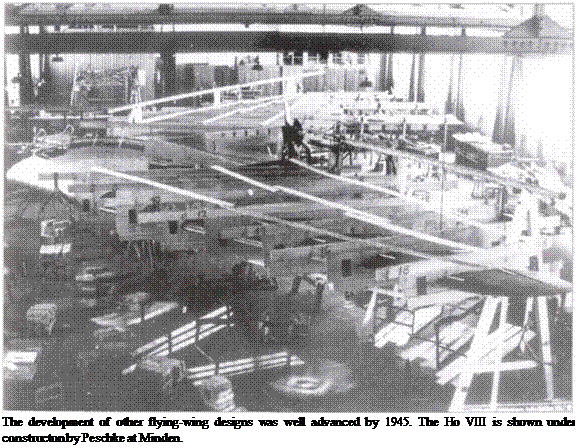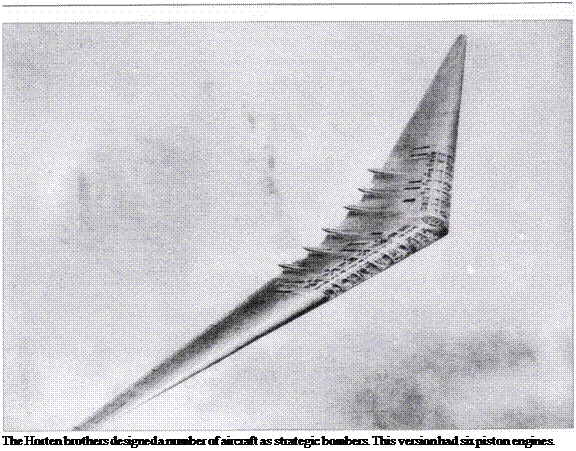The Go-229 in SS Hands

Towards the end of 1943, the SS-RSHA (Reich Main Security Office) began to document all imaginable command structure weakness in the Luftwaffe and aviation industry. Obergruppenfiihrer Kaltenbrunner’s enquiries eventually produced two comprehensive dossiers which concluded, as had been hoped, that ‘the Luftwaffe has lost quantitative and qualitative superiority in the air on account of incorrect measures taken by the RLM.’Most responsible officers at

the SS-RSHA were secretly convinced that only the SS could bring about a favourable change in the air war, only the SS (as they saw it) had the necessary brutality and commitment to score important victories in the shortest time frame. In the summer of 1944 SS-Standartenfuhrer Dr Martin Brustmann, a veteran in aviation affairs, began advocating an ‘SS air arm’. Under SS auspices, extremely fast flying-wing aircraft would be built as soon as possible in factories both above and below ground. In view of the shortage of raw materials SS-WHA had to accept substitutes: steel plating for aluminium, and in particular wood for high performance machines. SS-Obergruppenfiihrer Hans Jiittner, whom Himmler had appointed Deputy Chief of Army Armaments on 21 July 1944, was considered the man to take over air armaments for the SS. He enlisted the cooperation of SS-Hauptsturmfiihrer Kurt May, whose furniture factory at Tamm near Stuttgart would initially produce 12 Ho IXs. It seems that the idea must have been to check its development potential as a fighter. The first 12 would be trainers. After Himmler approved the project, Jiittner started producing the
Ho III, but progress was slow because May was increasingly involved in procuring wood for He 162 production and was in charge of the Stuttgart – Esslingen assembly region for Volksjager wooden parts. Work on the Ho III remained below manufacturing targets and at the beginning of 1945 the Horten design dropped out of the picture.

After Kammler was appointed to head all development, testing and completion of jet aircraft on 27 March 1945, he found he was unable to achieve miracles. Even though all Horten designs being worked on now received greater impetus than before, nothing came of hopes that the Но IX could regain air superiority. Despite the SS s determination to set up a fanatical SS air corps, there was no progress, not even with recruitment. SS losses on all fronts were so high that ensigns commanded companies. Assembling sufficient men suitable for training as fighter pilots was impossible, and even the omnipotent SS service centres were frustrated in their self-appointed task of bringing air armaments under SS control. Nevertheless, in apparent ignorance of how the war was going, at conferences involving the Riistungsstab and Chief-TLR, almost utopian ideas and projects continued to be discussed.

Messerschmitt and Junkers both designed powerful jet bombers in the flying-wing configuration. The Me P 1108, for example, would have been capable of carrying four SC 1800 bombs over long distances.










